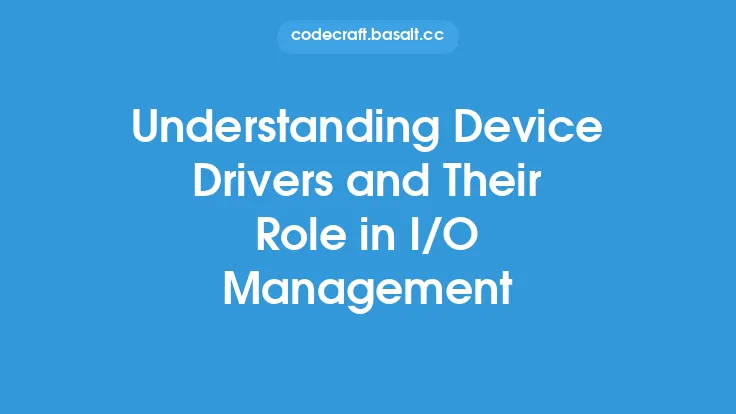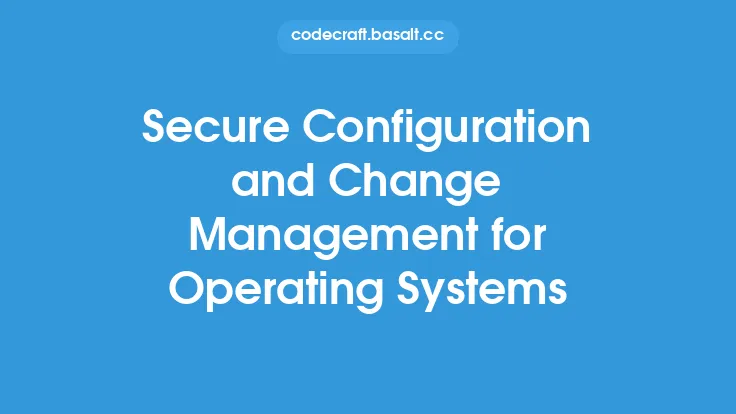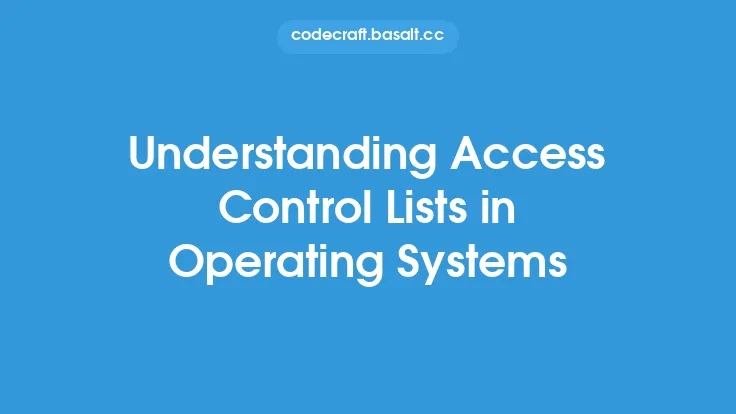Device management is a critical component of operating systems, responsible for managing and controlling the interactions between the operating system and hardware devices. It involves a set of policies, procedures, and protocols that ensure devices are properly configured, monitored, and maintained to provide optimal performance, reliability, and security. In this article, we will delve into the fundamentals of device management in operating systems, exploring its importance, key concepts, and technical aspects.
Importance of Device Management
Device management is essential for ensuring the smooth operation of computer systems. It enables the operating system to communicate with hardware devices, manage device resources, and handle device-related errors. Effective device management is crucial for preventing device conflicts, ensuring data integrity, and providing a stable and secure computing environment. Moreover, device management plays a vital role in optimizing system performance, as it allows the operating system to allocate device resources efficiently and manage device access.
Key Concepts in Device Management
Several key concepts are fundamental to understanding device management in operating systems. These include:
- Device drivers: Specialized software components that enable the operating system to communicate with hardware devices. Device drivers translate operating system requests into device-specific commands and manage data transfer between the operating system and devices.
- Device interfaces: Standardized interfaces that define how devices interact with the operating system. Device interfaces provide a common set of commands and protocols for device communication, enabling devices from different manufacturers to be used with the same operating system.
- Device configuration: The process of setting up devices to work with the operating system. Device configuration involves specifying device parameters, such as device addresses, interrupt requests, and DMA channels.
- Device monitoring: The process of tracking device performance and detecting device errors. Device monitoring enables the operating system to take corrective action in case of device failures or errors.
Technical Aspects of Device Management
From a technical perspective, device management involves several complex mechanisms and protocols. These include:
- Interrupt handling: A mechanism that enables devices to interrupt the operating system and request attention. Interrupt handling involves managing interrupt requests, prioritizing interrupts, and handling interrupt conflicts.
- Direct Memory Access (DMA): A technique that enables devices to transfer data directly to and from memory, bypassing the operating system. DMA requires careful management to prevent data corruption and ensure efficient data transfer.
- Input/Output (I/O) scheduling: A mechanism that manages device access and schedules I/O operations. I/O scheduling involves prioritizing I/O requests, managing device queues, and optimizing I/O performance.
- Device resource allocation: A mechanism that manages device resources, such as device addresses, interrupt requests, and DMA channels. Device resource allocation involves allocating resources efficiently, managing resource conflicts, and deallocating resources when no longer needed.
Device Management in Modern Operating Systems
Modern operating systems, such as Windows, Linux, and macOS, provide sophisticated device management capabilities. These operating systems use a combination of device drivers, device interfaces, and device management protocols to manage devices and provide a stable and secure computing environment. Additionally, modern operating systems often include advanced device management features, such as:
- Plug and Play (PnP): A mechanism that enables devices to be automatically detected and configured by the operating system.
- Device enumeration: A mechanism that enables the operating system to discover and manage devices on the system.
- Power management: A mechanism that enables the operating system to manage device power consumption and reduce energy waste.
Conclusion
In conclusion, device management is a critical component of operating systems, responsible for managing and controlling the interactions between the operating system and hardware devices. Understanding the fundamentals of device management, including key concepts, technical aspects, and modern operating system features, is essential for developing efficient, reliable, and secure computing systems. By providing a stable and secure computing environment, device management plays a vital role in ensuring the smooth operation of computer systems and enabling users to work efficiently and effectively.





